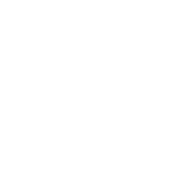Recommended Posts
amir1967 0
QuoteI've read a lot on the forums that people say that a 170 loaded at 1.0 behaves differently that a 105 at a wingloading of 1.0. My big question is not on whether or not this is true but rather is how do you test this?
Ok here is the idea, take a few pilots all of diiferent body weights. and set up several test, say all on a 1.0 wing loading but on say 5 different canopies, ranging from a 230 to a 105.
The test is simple, do a turn, with a camera and a g-meter, the thing that measure the amount of g-force that is being generated. Do several turns, ex a 90 with a 1/4 brake, measure it, 1/2 brake 90 degree turn. The measurement is how long does it take to do the turn, what g's do you generate and anything else that you will need. You do this test on different wingloadings on different canopies, naturally all on a square/ elliptical/ cross-braced.
Now I know there are propably 50 holes in this test but is this test any good? Also has a test like this ever been done and what were the results.
Ian, if this post is in the wrong place please move it
Good Q that I would like to get answer too.
Let say we go with 2 jumper hi hop flying side by side one on 170@1.0 en second 135@1.0 .what is the speed sink rate do 180 hom much hight is lost and so on.
At one point they are the same or or 170sqf has to put some weight let say @1.2 and test again.
Is that been tested and if where I can read about it.
*** ps*** 8 years in the sport 550 jump alot of blaa,blaa,bla and never answer to simple question
Please
Amir
Two canopies: Same design, different proportions
longer line lengths = longer pendulum effect, longer recovery. (inverse is also true)
larger canopy= more drag, but also more overall recovery from dive and turn due to increased surface area. (inverse also true)
These two seperate effects of downsizing are inversely exponentional to themselves. (fancy way of saying that the smaller/larger the sizes do not increase or decrease recovery or drag at a linear rate, it increases much more on the ends of extremity)
Using your example 170 vs. 135 (all other things being equal) Both canopies will share the same designed glide slope, the 135 will be faster due to reduced surface area and drag, faster turn rate due to shorter distance betweeen point or rotation and point of anchor, faster recovery to wings level flight due to same effect; but, longer overall recovery to original glide slope to reduced surface area.available.
Others please chime in if you can give a better explaination.



Share this post
Link to post
Share on other sites